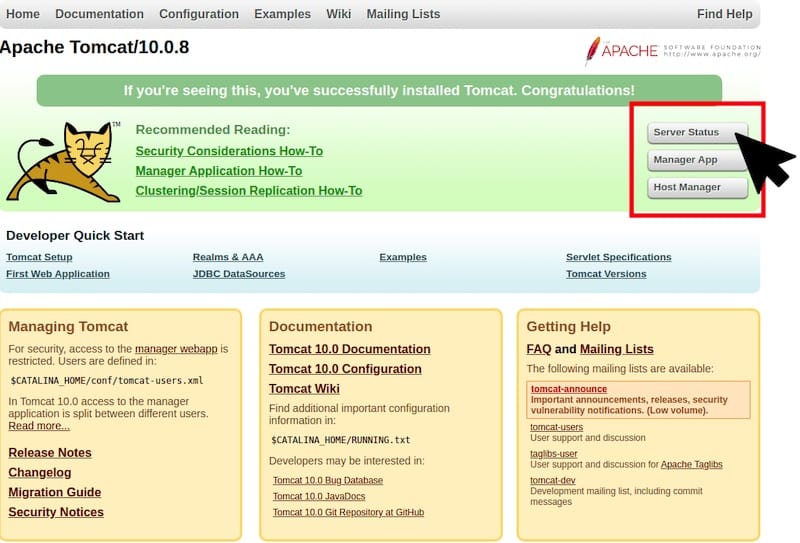
In this tutorial, we will show you how to install Apache Tomcat on CentOS 8. For those of you who didn’t know, Apache Tomcat is an open-source web server and servlet container developed by the Apache Software Foundation. It implements the Java Servlet, JavaServer Pages (JSP), Java Unified Expression Language, and Java WebSocket specifications from Sun Microsystems and provides a web server environment for Java code to run in.
This article assumes you have at least basic knowledge of Linux, know how to use the shell, and most importantly, you host your site on your own VPS. The installation is quite simple and assumes you are running in the root account, if not you may need to add ‘sudo‘ to the commands to get root privileges. I will show you through the step-by-step install Apache Tomcat on CentOS 8 server.
Prerequisites
- A server running one of the following operating systems: CentOS 8.
- It’s recommended that you use a fresh OS install to prevent any potential issues.
- SSH access to the server (or just open Terminal if you’re on a desktop).
- A
non-root sudo useror access to theroot user. We recommend acting as anon-root sudo user, however, as you can harm your system if you’re not careful when acting as the root.
Install Apache Tomcat on CentOS 8
Step 1. First, let’s start by ensuring your system is up-to-date.
sudo dnf -y update
Step 2. Installing Java.
Apache Tomcat 9 requires Java to be installed on the server. Run the following command to install Java:
dnf install java-1.8.0-openjdk-devel
Once installed, You can also verify it, by issuing the following command:
java -version
Step 3. Installing Apache Tomcat on CentoS 8.
First, go to the official Apache Tomcat website and download the most recent version of the software to your server. At the moment the most recent release is version 9.0.16:
wget http://www.apache.org/dist/tomcat/tomcat-9/v9.0.26/bin/apache-tomcat-9.0.26.zip
Then, unzip the file:
unzip apache-tomcat-9.0.26.zip ln -s /opt/apache-tomcat-9.0.26 /opt/tomcat
It is not recommended to run Apache Tomcat as user root, so add tomcat user and group:
useradd tomcat chown -R tomcat:tomcat /opt/apache-tomcat-9.0.26
Next, Create the a systemd file with the following content:
nano /etc/systemd/system/tomcat.service
Add the following:
[Unit] Description=Tomcat After=syslog.target network.target [Service] Type=forking User=tomcat Group=tomcat ExecStart=/opt/tomcat/bin/catalina.sh start ExecStop=/opt/tomcat/bin/catalina.sh stop [Install] WantedBy=multi-user.target
Save the file and run the following command to reload the systemd manager:
systemctl daemon-reload chmod +x /opt/tomcat/bin/*.sh systemctl start tomcat systemctl enable tomcat
Step 4. Assessing Apache Tomcat 9.
Finally, open Tomcat from your browser, go to your IP or domain with the 8080 port (because Tomcat will always run on the 8080 port) as an example: http://your-IP-address:8080/manager/html using user ‘admin’ and password ‘PASSWORD’

Congratulations! You have successfully installed Apache Tomcat. Thanks for using this tutorial for installing Apache Tomcat on CentOS 8 systems. For additional help or useful information, we recommend you check the official Apache Tomcat website.